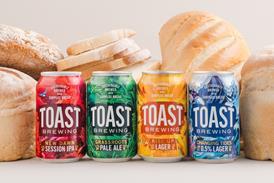A mix of marketing and understanding flavour sensations is key to unlocking children’s choices, says Bryan Urbick
"If she doesn't like it, she won't eat it". It's a familiar cry from a mother desperate to get a 12-year-old daughter to eat anything and, in my view, is the crux of the challenge for today's food industry.
With the societal shift of power to the child and the movement away from marketing foods directly to them, understanding children is even more important.
Though the industry's race for nutrition is necessary, we also fall into a common trap. Our cues and clues on packaging, advertising and the food itself all scream "healthier choice", and inadvertently we train kids that if it is healthy, it is likely to taste bad.
So how do we succeed in the kids' foods and beverages sector?
Though positioning may entice the child, flavour is the reason kids come back for more. Children's flavour preferences are as widespread as their personalities and their tastes evolve as they grow up.
A liking for sweetness is one of the taste sensations humans are born with. It is also key to keep flavours simple for young children.
At the age of eight or nine, an interest in sour flavours begins. The sour taste is generally regarded as a warning sign that we are about to ingest something potentially harmful. There is a suggestion that children's enjoyment of it is something akin to a subliminal rollercoaster, with the mind exhilarated by the possibility of danger.
Increasing the excitement of familiar flavours can entice children as they get older. Arctic Blast and Riptide Rush are good examples of the sorts of descriptors that appeal. Names must also suggest great taste. This way of communicating tends to appeal to children aged eight to 12, as interested in fun as they are in understanding taste.
After the age of 12, fantastical names begin to seem too childish and adult flavours begin to appeal.
Kids, just like adults, have widely varying tastes, but while adults are more likely to try new things it is worth remembering that kids can be neophobic. Sticking to the familiar may seem unadventurous but innovation needs gradual introduction.
And then, perhaps, our desperate mum could be better served.
Bryan Urbick is CEO and president of the Consumer Knowledge Centre.
"If she doesn't like it, she won't eat it". It's a familiar cry from a mother desperate to get a 12-year-old daughter to eat anything and, in my view, is the crux of the challenge for today's food industry.
With the societal shift of power to the child and the movement away from marketing foods directly to them, understanding children is even more important.
Though the industry's race for nutrition is necessary, we also fall into a common trap. Our cues and clues on packaging, advertising and the food itself all scream "healthier choice", and inadvertently we train kids that if it is healthy, it is likely to taste bad.
So how do we succeed in the kids' foods and beverages sector?
Though positioning may entice the child, flavour is the reason kids come back for more. Children's flavour preferences are as widespread as their personalities and their tastes evolve as they grow up.
A liking for sweetness is one of the taste sensations humans are born with. It is also key to keep flavours simple for young children.
At the age of eight or nine, an interest in sour flavours begins. The sour taste is generally regarded as a warning sign that we are about to ingest something potentially harmful. There is a suggestion that children's enjoyment of it is something akin to a subliminal rollercoaster, with the mind exhilarated by the possibility of danger.
Increasing the excitement of familiar flavours can entice children as they get older. Arctic Blast and Riptide Rush are good examples of the sorts of descriptors that appeal. Names must also suggest great taste. This way of communicating tends to appeal to children aged eight to 12, as interested in fun as they are in understanding taste.
After the age of 12, fantastical names begin to seem too childish and adult flavours begin to appeal.
Kids, just like adults, have widely varying tastes, but while adults are more likely to try new things it is worth remembering that kids can be neophobic. Sticking to the familiar may seem unadventurous but innovation needs gradual introduction.
And then, perhaps, our desperate mum could be better served.
Bryan Urbick is CEO and president of the Consumer Knowledge Centre.













No comments yet